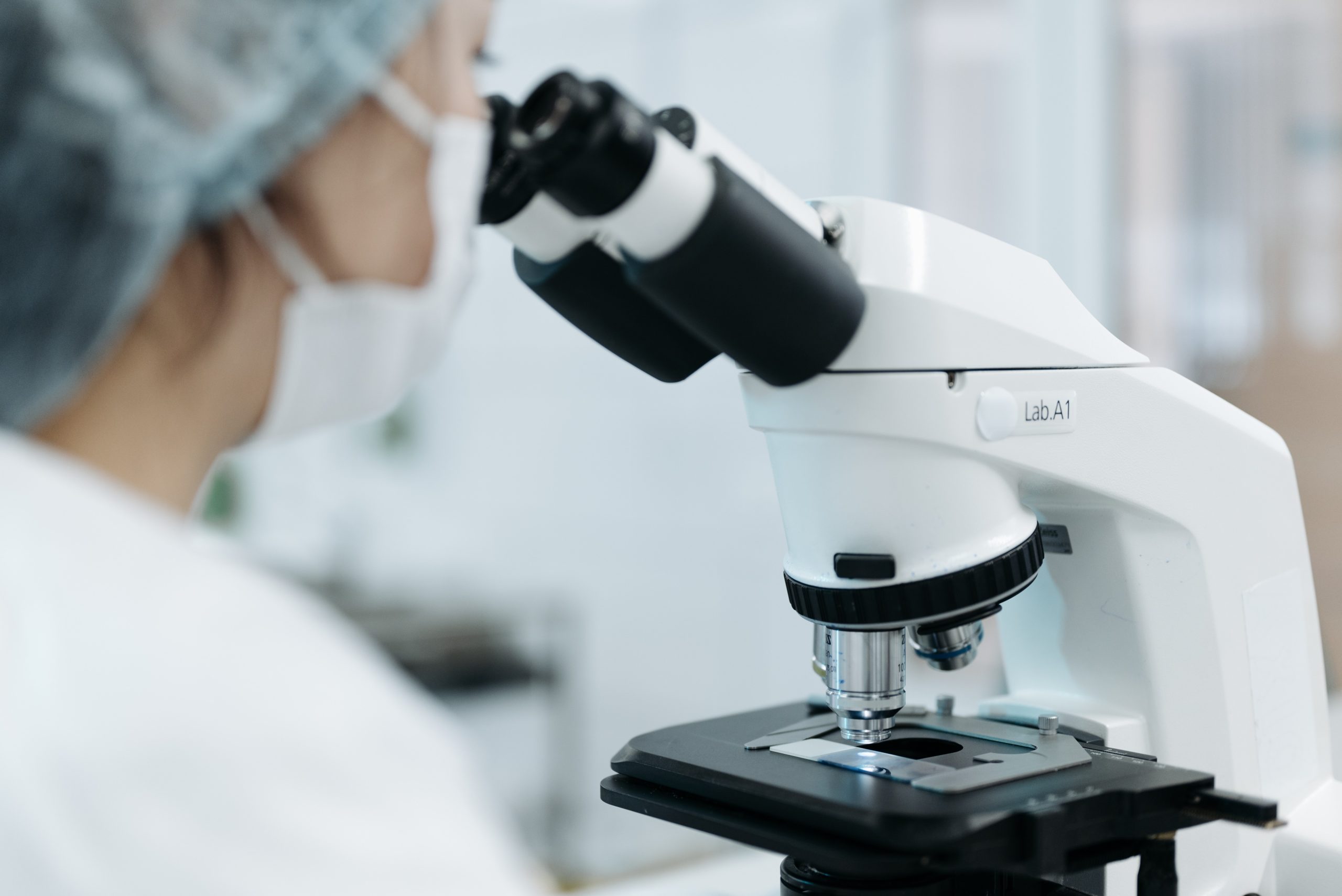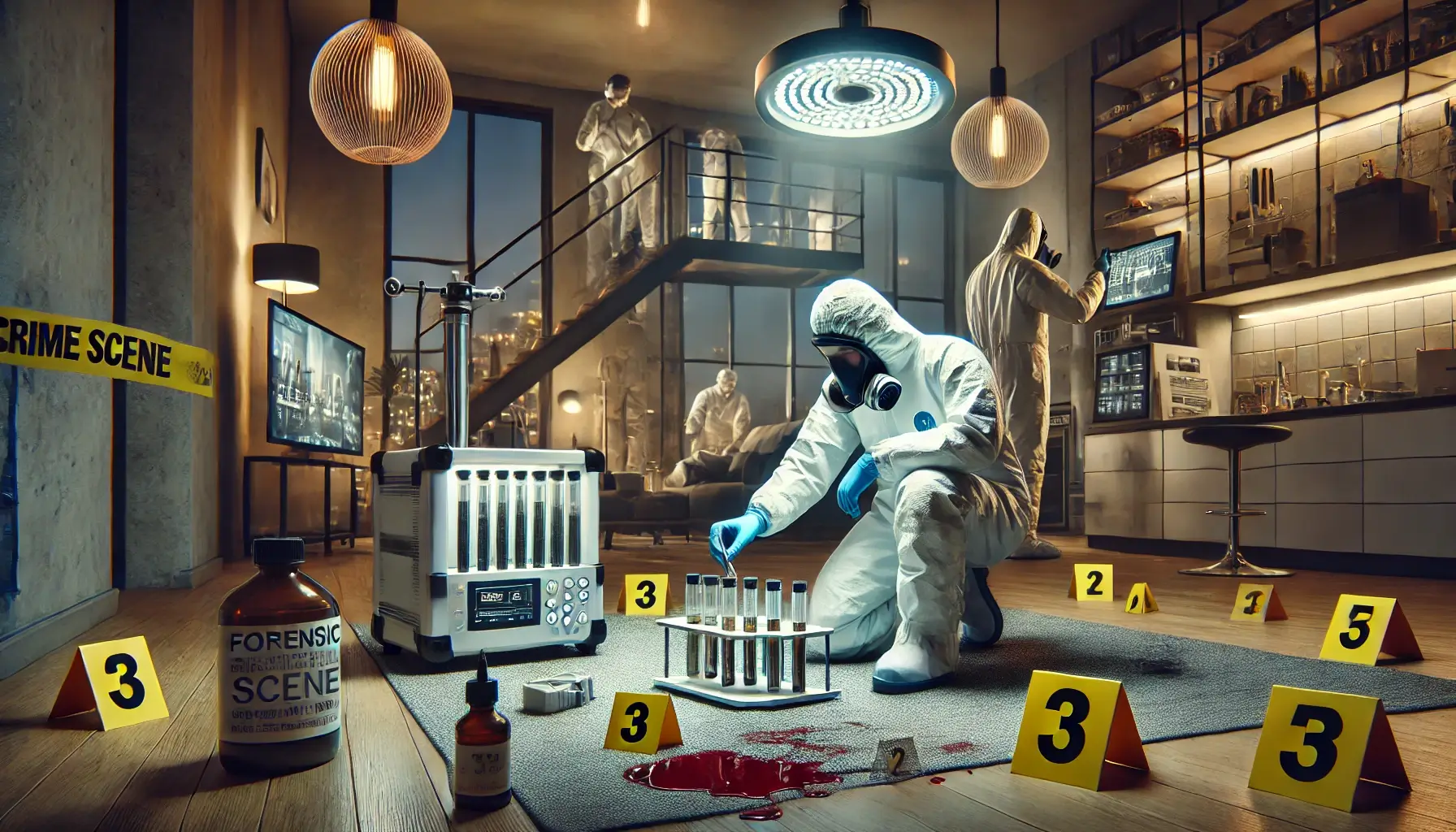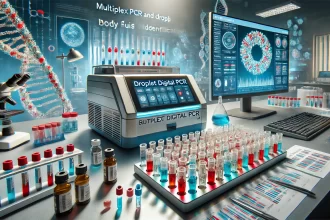Forensic serology is a specialized branch of forensic science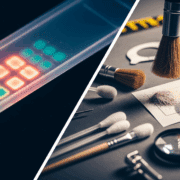
- What is Forensic Serology?
- A Brief History of Forensic Serology
- Key Components of Forensic Serology
- Blood Analysis
- The Kastle-Meyer test (Phenolphthalein Test):
- Luminol Test
- Takayama Crystal Assay (Hemochromogen Crystal Test):
- The HemaTrace™ Test:
- Semen Analysis
- Acid Phosphatase Test
- 5-Bromo-4-chloro-3-indolyl phosphate (BCIP) Test
- p30 (Prostate-Specific Antigen) Test:
- The Christmas Tree Stain
- The Sperm Hy-Liter™ test
- Saliva and Other Bodily Fluids
- Techniques Used in Forensic Serology
- Importance in Criminal Investigations
- Challenges and Limitations of Forensic Serology
- Ethical and Legal Considerations of Forensic Serology
- References & Suggested Readings
- Conclusion
In this post, we will explore the components, history, and methodologies of forensic serology, its role in solving complex criminal cases, and the challenges and ethical considerations of its use within the criminal justice system.
In This Article:
- What is Forensic Serology?
- A Brief History of Forensic Serology
- Key Components of Forensic Serology
- Techniques Used in Forensic Serology
- Importance in Criminal Investigations
- Challenges and Limitations of Forensic Serology
- Ethical and Legal Considerations of Forensic Serology
- Conclusion
What is Forensic Serology?
Forensic serology involves using immunological and biochemical techniques to analyze biological evidence
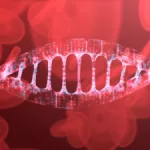 DNA, or Deoxyribonucleic Acid, is the genetic material found in cells, composed of a double helix structure. It serves as the genetic blueprint for all living organisms. Read Full Definition analysis to determine the likely donors of these samples. These findings are instrumental in linking criminals to crime scenes or excluding individuals from involvement in a crime.
DNA, or Deoxyribonucleic Acid, is the genetic material found in cells, composed of a double helix structure. It serves as the genetic blueprint for all living organisms. Read Full Definition analysis to determine the likely donors of these samples. These findings are instrumental in linking criminals to crime scenes or excluding individuals from involvement in a crime.
Forensic serologists may also assist in reconstructing crime scenes by analyzing bloodstain patterns. The presence, location, and type of body fluids can provide valuable information about how a crime unfolded and the potential movements of both the perpetrator and the victim. This discipline provides direct physical evidence and helps paint a broader picture of the events that took place during a crime.
A Brief History of Forensic Serology
The field of forensic serology has undergone significant evolution since its inception. Its roots trace back to the early 20th century when scientists began applying blood typing techniques to forensic investigations. However, it was not until the late 1970s and early 1980s that forensic serology began to take the shape we recognize today.
In 1978, the Serological Research Institute (SERI) was established in California. Within its first year, SERI had trained over 100 criminalists across the United States in multisystem procedures for characterizing body fluids, setting the groundwork for modern forensic serology. The establishment of SERI played a pivotal role in formalizing training and establishing standardized practices that would shape the way serology was performed for decades.
By the 1980s, researchers such as George Sensabaugh at UC Berkeley discovered semen-specific proteins, like P30, enabling improved identification of biological samples. This discovery paved the way for the development of better confirmatory tests, which are critical in securing accurate results in sexual assault cases.
The introduction of DNA typing in forensic science in 1988 revolutionized the field, allowing for far more precise"Precise" refers to the degree of closeness or consistency between multiple measurements or values taken under the same conditions. It indicates how well these measurements agree with each other, regardless of whether they are accurate Read Full Definition identification of individuals. DNA testing replaced older methods of identifying genetic markers and introduced a new standard for accuracyIn scientific and measurement contexts, "accuracy" refers to the degree of proximity or closeness between a measured value and the true or actual value of the measured quantity. Accuracy indicates how well a measurement reflects Read Full Definition. By 1996, capillary electrophoresis technology was adopted, enhancing the efficiency of forensic serological analysis and providing a powerful tool for resolving cold cases and complex investigations. Today, DNA evidence is widely accepted in courtrooms worldwide, providing critical information for solving crimes and exonerating wrongfully convicted individuals. DNA analysis continues to be one of the most definitive forms of biological identification, with applications that stretch far beyond its initial use.
Key Components of Forensic Serology
Blood Analysis
Blood is the most commonly recovered type of biological evidence at crime scenes. By analyzing bloodstain patterns, it can be used to link a suspect to a crime or reconstruct the events of a crime. Bloodstain pattern analysis can reveal the direction, angle, and force of blood spatter, providing insights into the manner of death or injury and the sequence of events.
The analysis of blood begins with presumptive tests, such as the Kastle-Meyer test, which produces a bright pink color when blood is present due to the catalytic activity of hemoglobin. Presumptive tests are valuable for quickly identifying potential evidence at crime scenes, allowing investigators to collect relevant samples for further analysis.
Luminol is another tool used to detect trace amounts of blood. It produces a blue glow in response to blood, allowing investigators to identify hidden stains even if they have been cleaned or washed away. Subsequently, confirmatory tests like the Takayama Crystal Assay or immunochromatographic assays are employed to verify the presence of human blood. Confirmatory tests ensure that the biological material is definitively blood, specifically human blood.
The Kastle-Meyer test (Phenolphthalein Test):
The Kastle-Meyer test is a presumptive blood test that uses phenolphthalein as a chemical indicator to detect the presence of hemoglobin. The test works by oxidizing colorless phenolphthalein to a pink or purple color in the presence of blood and hydrogen peroxide.
If peroxidase activity from the heme group (found on the Hemoglobin moleculeA molecule is a fundamental unit of matter composed of two or more atoms that are chemically bonded together. It is the smallest possible amount of a particular substance that retains all of the unique Read Full Definition in the blood) is present, the chemicals are oxidized. If oxidation occurs, a color change (to bright pink) is observed. If there is no peroxidase activity, the oxidation will not happen, and no color change will be followed.
- Pink color change = presumptively positive for blood*
- No color change = negative for blood.
Luminol Test
The Luminol test is a presumptive blood test that uses luminol as a chemical reagent to detect the presence of blood. Luminol reacts with the iron in hemoglobin, emitting a blue luminescence in dark conditions. The test works by spraying a luminol solution onto surfaces where blood traces might be present, even if they are invisible to the naked eye.
If hemoglobin from blood is present, the luminol is oxidized and emits a blue glow. If no hemoglobin is present, the oxidation does not occur, and no luminescence is observed.
- Blue luminescence observed = presumptively positive for blood
- No luminescence = negative for blood
Takayama Crystal Assay (Hemochromogen Crystal Test):
Takayama Crystal Assay (Hemochromogen Crystal Test):
The Takayama Crystal Assay is a confirmatory blood test that detects the presence of hemoglobin by forming characteristic crystals. The test involves adding a mixture of chemicals, including pyridine and reducing sugar, to a suspected blood sample.
If hemoglobin is present, it reacts with the reagents to form pink, feathery crystals of pyridine ferroprotoporphyrin (hemochromogen), which can be observed under a microscope. If there is no hemoglobin, no crystals will form.
- Formation of pink crystals = confirmatory positive for blood
- No crystal formation = negative for blood
The HemaTrace™ Test:
The HemaTrace™ test is a confirmatory testA confirmatory test is a specialized and highly accurate analytical procedure conducted after a preliminary screening or presumptive test to definitively identify a substance or compound. A confirmatory test is a specific type of test Read Full Definition used to detect human blood by identifying human hemoglobin through immunochromatographic assay technology. The test employs antibodies that specifically bind to human hemoglobin, providing a quick and reliable method for confirming the presence of human blood in forensic samples.
- Procedure: A sample extract is applied to the test strip. If human hemoglobin is present, it binds to the antibodies and forms a visible line on the test strip.
- Interpretation of Results:
- Two lines appear (control line and test line) = Confirmatory positive for human blood
- Only the control line appears = Negative for human blood
- No lines or only test line appears = Invalid test
Important Notes:
- SpecificityIn the context of laboratory equipment or analytical techniques, the term "specific" describes the capability of a machine or method to accurately and selectively detect particular molecules or substances while minimizing interference from others. Specificity Read Full Definition: The test is highly specific to human hemoglobin but may cross-react with primate blood.
- SensitivityIn the context of laboratory equipment or analytical techniques, the term "sensitive" describes the capability of a machine or method to detect even very small amounts or concentrations of a substance. Sensitivity is a quantitative Read Full Definition: Capable of detecting low levels of human hemoglobin in samples.
- Usage: Commonly used in forensic investigations to confirm the presence of human blood on various substrates.
Semen Analysis
Semen analysis is particularly crucial in sexual assault investigations, where establishing the presence of semen can be a key factor in corroborating victim testimony. Detecting the presence of semen typically begins with an Alternative Light Source (ALS), which causes semen to fluoresce under UV light. This non-invasive method allows investigators to locate evidence that might otherwise be missed by visual inspection alone.
A presumptive testPresumptive test - a test that is typically conducted at a crime scene that provides investigators with basic information regarding the compound in question. Presumptive tests can typically reveal the class of evidence, but are Read Full Definition, such as the acid phosphataseAcid phosphatase- an enzyme found in many tissues but is 500 to 1000 times more active in human semen than any other body fluid. May be used forensically as an indicator for the presence of semen. Read Full Definition (AP) test, is then performed to detect the enzyme acid phosphatase present in high concentrations in seminal fluid. While presumptive tests are useful, they are not definitive; therefore, additional testing is required.
Confirmatory tests include microscopic examination with Christmas Tree stain to visualize sperm cells and the prostate-specific antigen (PSA) test. The Christmas Tree stain colors sperm heads red and tails green, allowing for easy visualization under a microscope. The PSA test, which detects a protein unique to seminal fluid, is used to confirm the presence of semen even if no sperm cells are present, which is particularly important in cases involving individuals with low sperm counts or vasectomies.
Acid Phosphatase Test
The Acid Phosphatase test is a presumptive test used to detect semen by identifying the enzyme acid phosphatase, which is abundant in seminal fluid. This test provides a quick method for indicating the presence of semen in forensic samples.
Procedure: A moistened swab or filter paper is applied to the suspected stain. A reagent containing alpha-naphthyl phosphate and Fast Blue B is then added to the sample. If acid phosphatase is present, it catalyzes a reaction that results in a color change.
Interpretation of Results:
- Rapid purple color change (within 30 seconds) = Presumptive positive for semen
- No color change or slow color change = Negative or inconclusive for semen
Important Notes:
- Specificity: While the test is sensitive to semen, other bodily fluids or substances may cause false positives due to lower levels of acid phosphatase.
- Sensitivity: Capable of detecting low levels of acid phosphatase present in semen.
5-Bromo-4-chloro-3-indolyl phosphate (BCIP) Test
The BCIP test is a presumptive test used to detect semen by identifying the enzyme alkaline phosphatase, which is abundant in seminal fluid. The test utilizes the substrate 5-Bromo-4-chloro-3-indolyl phosphate (BCIP), which reacts with alkaline phosphatase to produce a colored product.
Procedure: A sample suspected of containing semen is treated with a BCIP reagent. If alkaline phosphatase is present, it hydrolyzes BCIP, resulting in the formation of a blue-colored precipitate.
Interpretation of Results:
- Blue color development = Presumptive positive for semen
- No color change = Negative for semen
Important Notes:
- Specificity: While sensitive to alkaline phosphatase in semen, other bodily fluids or tissues may also contain this enzyme, potentially leading to false positives.
- Sensitivity: Capable of detecting low levels of alkaline phosphatase present in semen.
p30 (Prostate-Specific Antigen) Test:
The p30 test is a confirmatory test used to detect human semen by identifying the presence of prostate-specific antigen (PSA), a protein produced by the prostate gland and abundant in seminal fluid. The test employs immunochromatographic assay technology, utilizing antibodies that specifically bind to PSA, providing a rapid and reliable method for confirming the presence of semen in forensic samples.
Procedure: A sample extract is applied to the test strip. If PSA is present, it binds to the antibodies and forms a visible line on the test strip.
Interpretation of Results:
- Two lines appear (control line and test line) = Confirmatory positive for human semen
- Only control line appears = Negative for human semen
- No lines or only test line appears = Invalid test
Important Notes:
- Specificity: The test is highly specific to human PSA but may cross-react with semen from other primates.
- Sensitivity: Capable of detecting low levels of PSA present in seminal fluid.
The Christmas Tree Stain
The Christmas Tree Stain is a confirmatory test used in forensic biology to identify sperm cells in a sample. This staining technique differentially colors the components of sperm cells, making them visible under a microscope for definitive identification.
Procedure: A smear of the suspected sample is prepared on a microscope slide and air-dried. The slide is then sequentially stained with two dyes:
- Nuclear Fast Red: Stains the nuclei (heads) of sperm cells red.
- Picroindigocarmine (PIC): Stains the cytoplasm and tails of sperm cells green or blue-green.
After staining, the slide is rinsed, dried, and examined under a microscope.
Interpretation of Results:
- Presence of sperm cells with red heads and green tails = Confirmatory positive for sperm cells
- Absence of sperm cells = Negative for sperm cells
Important Notes:
- Specificity: The test is specific for sperm cells due to their unique morphology and staining characteristics.
- Sensitivity: Capable of detecting sperm cells even in samples with low sperm concentration.
The Sperm Hy-Liter™ test
The Sperm Hy-Liter™ test is a confirmatory test used to identify human sperm cells microscopically through fluorescent staining. This technique utilizes an antigen-antibody reaction where fluorescently labeled antibodies bind specifically to proteins on human sperm heads, causing them to fluoresce under a microscope.
Procedure: A smear of the suspected sample is prepared on a microscope slide and fixed. The slide is treated with:
- Fluorescent Antibody Stain (FITC): Binds to human sperm heads, making them fluoresce bright green.
- Nuclear Counterstain (DAPI): Stains all cell nuclei in the sample, causing them to fluoresce blue.
The slide is then examined under a fluorescence microscope using two different filters for FITC (green) and DAPI (blue).
Interpretation of Results:
- Green fluorescent sperm heads observed (with correct size, shape, and presence of acrosome) = Confirmatory positive for human sperm cells
- No green fluorescent sperm heads observed = Negative for human sperm cells
Important Notes:
- Specificity: The test is specific to human sperm heads due to the use of antibodies targeting sperm-specific antigens.
- Morphological Confirmation: Positive identification requires observing the characteristic morphology of sperm heads, including the unstained acrosome.
Saliva and Other Bodily Fluids
Saliva can often be found on bite marks, cigarette butts, or drinking containers, making it an important form of evidence in many types of investigations. The Phadebas test is commonly used to detect α-amylase, an enzyme found in saliva. This test can be useful in establishing contact between a suspect and an object or location.
While the Phadebas test is effective, it is considered presumptive and may produce false positives due to the presence of α-amylase in other bodily fluids. Therefore, more specific confirmatory tests, such as RSID-saliva, are often used to verify the presence of saliva and ensure reliable results.
Other bodily fluids, such as urine, sweat, and vaginal secretions, also provide valuable forensic evidence. These fluids can be analyzed for their specific components, such as urea or creatinine in urine, using various presumptive and confirmatory tests. Urine analysis, for example, is especially useful in drug-related investigations, as it can reveal the presence of substances or their metabolitesA metabolite is a compound produced due to metabolic processes or metabolic reactions within an organism. Metabolism refers to the collective chemical processes that occur within living cells to maintain life, including energy production, growth, Read Full Definition.
Phadebas™ Test:
The Phadebas™ test is a presumptive test used to detect saliva by identifying the enzyme alpha-amylase, which is abundant in human saliva. This test provides a quick method for indicating the presence of saliva in forensic samples.
Procedure: A sample suspected of containing saliva is mixed with the Phadebas reagent, which consists of starch microspheres with a blue dye. If alpha-amylase is present, it breaks down the starch, releasing the blue dye into the solution.
Interpretation of Results:
- Blue color development in the solution = Presumptive positive for saliva
- No color change = Negative for saliva
Important Notes:
- Specificity: While sensitive to alpha-amylase in saliva, other bodily fluids like sweat, tears, and some vaginal secretions also contain this enzyme, potentially leading to false positives.
- Sensitivity: Capable of detecting low levels of alpha-amylase present in saliva.
Creatinine Test:
The creatinine test is a presumptive test used to detect urine by identifying creatinine, a waste product formed from muscle metabolism and excreted in high concentrations in urine. This test helps indicate the presence of urine in forensic samples.
Procedure: A sample suspected of containing urine is subjected to a chemical reaction, such as the Jaffe reaction, where creatinine reacts with picric acid in an alkaline solution to form a reddish-orange complex.
Interpretation of Results:
- Reddish-orange color development = Presumptive positive for urine
- No color change = Negative for urine
Important Notes:
- Specificity: While creatinine is abundant in urine, it is also present in lower concentrations in other bodily fluids, so confirmatory tests may be needed to conclusively identify urine.
Techniques Used in Forensic Serology
Presumptive Tests
Presumptive tests are the initial methods used to determine the possible presence of specific bodily fluids. These tests are typically more sensitive but less specific than confirmatory tests. For instance, the Kastle-Meyer and acid phosphatase tests are used to indicate the presence of blood and semen, respectively, but can yield false positives due to cross-reactivity with other substances. Despite their limitations, presumptive tests are essential for narrowing down which samples require more rigorous testing.
Confirmatory Tests
Confirmatory tests are employed to conclusively verify the identity of a biological fluid. The RSID test for human blood, the Christmas Tree stain for semen, and the Phadebas test for saliva are all examples of confirmatory tests. These methods are generally more specific and reliable than presumptive tests, providing the high level of certainty needed for legal proceedings.
DNA Analysis
DNA analysis is one of the most powerful tools in forensic serology, enabling the identification of specific individuals from minute biological samples. PCR (Polymerase Chain Reaction), STR (Short Tandem RepeatA short tandem repeat is a microsatellite with repeat units that are 2 to 7 base pairs in length, with the number of repeats varying among individuals, making STRs effective for human identification purposes Read Full Definition) analysis, and mitochondrial DNA analysis are commonly used techniques for amplifying and analyzing DNA. These technologies have significantly improved the accuracy of forensic investigations, allowing authorities to solve cold cases and establish identity even from highly degraded samples. The use of CODIS (Combined DNA Index System) allows for matching DNA profiles across a nationwide database, facilitating the identification of suspects who may have committed crimes in different jurisdictions.
Importance in Criminal Investigations
Forensic serology is indispensable in modern criminal investigations, playing a vital role in solving cases involving violent crimes, sexual assaults, and homicides. The analysis of bodily fluids helps establish connections between individuals and crime scenes, often providing the evidence needed to convict offenders or exonerate the innocent.
Bloodstain pattern analysis can reveal how a crime was committed, including the position of individuals during an attack, the trajectory of blood spatter, and whether any defensive movements occurred. Similarly, the presence of semen in sexual assault cases can help corroborate victim testimony and identify suspects. Advances in DNA technology have further elevated the importance of forensic serology, making it possible to solve even the most challenging cases with precision. DNA evidence has been instrumental in overturning wrongful convictions and securing justice for victims long after the crime was committed.
Challenges and Limitations of Forensic Serology
Despite its strengths, forensic serology is not without its challenges. Sample contaminationContamination - The unwanted transfer of material from another source to a piece of physical evidence. The inadvertent touching of a weapon, thereby adding fingerprints to it is an example of evidence contamination. Read Full Definition is a major concern, as it can occur at any point during collection, transport, or analysis. Even with strict protocols, contamination remains a risk, particularly with the high sensitivity of modern DNA profiling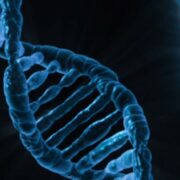
False positives and negatives are another limitation, especially with presumptive tests that may react with substances other than the targeted bodily fluid. Additionally, forensic serology often deals with degraded samples, which can complicate analysis and interpretation. The ethical use of DNA, including concerns over privacy and the retention of DNA profiles, also poses ongoing challenges. Ethical considerations also involve the use of familial DNA searches, which can sometimes implicate relatives of suspects who have never committed a crime. Balancing public safety and individual privacy is a constant ethical debate in the field of forensic science.
Ethical and Legal Considerations of Forensic Serology
Forensic serology is a powerful tool for justice, but it also raises important ethical and legal concerns. The use of DNA profiles obtained from crime scenes in court requires strict adherence to protocols to avoid contamination and ensure the evidence’s integrity. This helps protect against the misidentification of suspects and prevents the wrongful conviction of innocent individuals.
One of the most debated topics in the realm of forensic serology is the retention of DNA profiles. When DNA is collected, whether from convicted offenders, arrestees, or crime scenes, there are legal and ethical implications regarding how long these DNA samples are retained, who has access to them, and what they are used for. There are also ongoing debates regarding privacy, data Information in analog or digital form that can be transmitted or processed. Read Full Definition security, and the ethical implications of storing DNA profiles for extended periods.
Information in analog or digital form that can be transmitted or processed. Read Full Definition security, and the ethical implications of storing DNA profiles for extended periods.
Forensic databases like CODIS have transformed investigations, but they also bring privacy concerns into the spotlight. Critics argue that storing individuals’ genetic data, especially when obtained without explicit consent, infringes on personal privacy and could be used inappropriately. Balancing the need for public safety and maintaining individuals’ rights to privacy is a critical and ongoing debate in forensic science.
The use of familial DNA searches—where relatives’ DNA is used to identify suspects—has also raised ethical questions. Such searches can inadvertently bring law-abiding individuals under suspicion simply due to a family relationship, raising concerns over privacy and fairness. The potential for misuse of genetic data by insurance companies, employers, or others has led to calls for stricter regulation of how forensic DNA information is used and shared.
References & Suggested Readings
Click below to view all references used to support the content and explore additional readings for further insights.
- https://www.nj.gov/njsp/division/investigations/forensic-serology.shtml
- https://www.nu.edu/blog/what-is-forensic-serology/
- https://study.com/academy/lesson/forensic-serology-definitions-examples.html
- https://en.wikipedia.org/wiki/Forensic_serology
- https://cris.mruni.eu/cris/bitstreams/fbfa9865-acbe-46fa-b06b-c711425401e5/download
- https://ejfs.springeropen.com/articles/10.1186/s41935-017-0010-1
- https://www.linkedin.com/pulse/20141016185845-13967252-forensic-serology-old-but-not-forgotten
Conclusion
Forensic serology plays a vital role in criminal investigations, using the analysis of bodily fluids to provide key evidence that can link suspects to crime scenes, validate victim testimonies, or even solve cold cases. Techniques such as bloodstain pattern analysis, semen identification, and DNA profiling allow forensic scientists to provide crucial evidence that shapes the outcome of criminal trials.
However, it is essential to recognize the limitations and ethical considerations that accompany forensic serology. Issues like sample contamination, false positives, and privacy concerns highlight the complexities of using biological evidence in criminal investigations. The integration of advanced DNA analysis methods, while powerful, must be approached with caution to prevent misuse and uphold the principles of justice.
As forensic technology continues to advance, the role of forensic serology in criminal justice will only grow in importance. However, these advancements must be balanced with ethical safeguards to ensure that the powerful tools of forensic science are used responsibly and fairly.
Moving forward, how do we address these ethical dilemmas while continuing to leverage the power of forensic serology to solve crimes?



